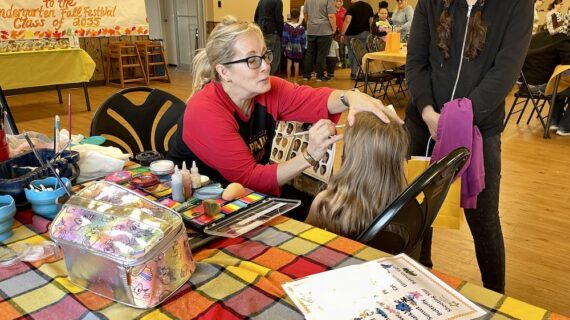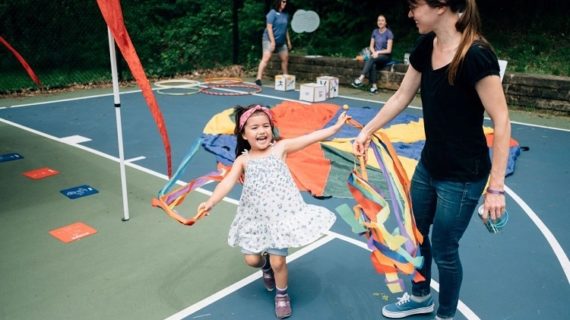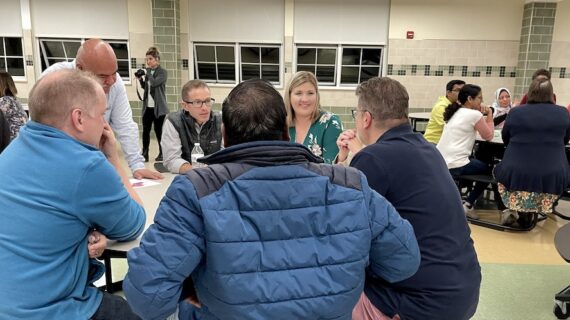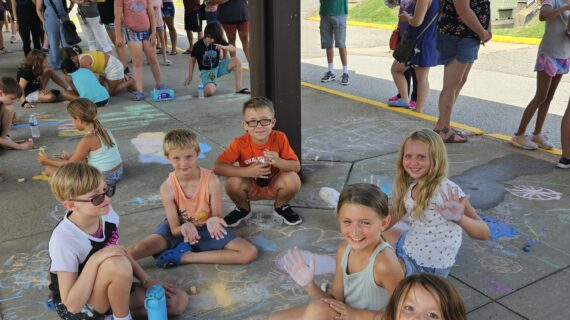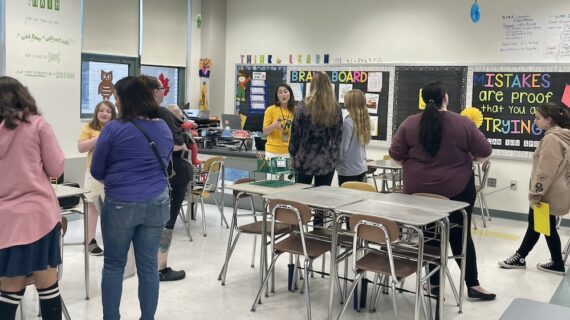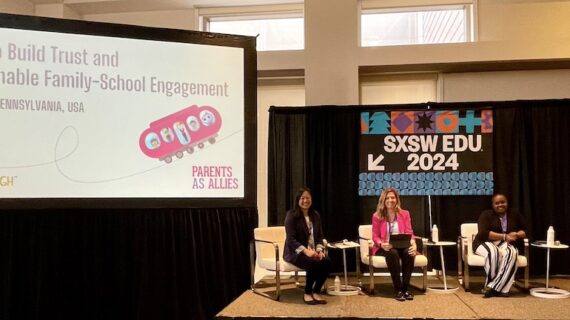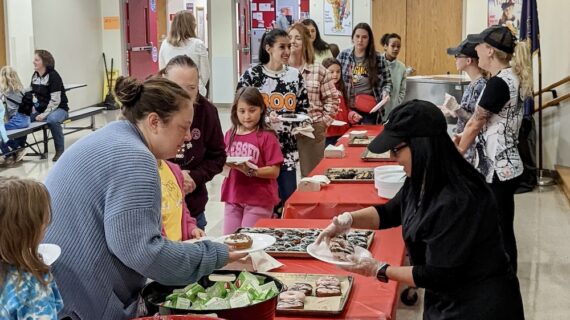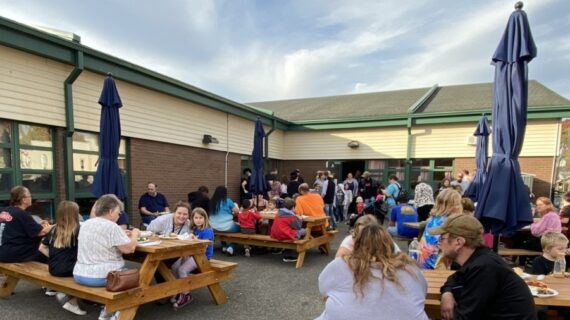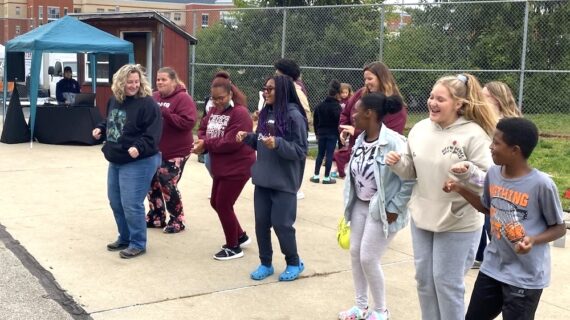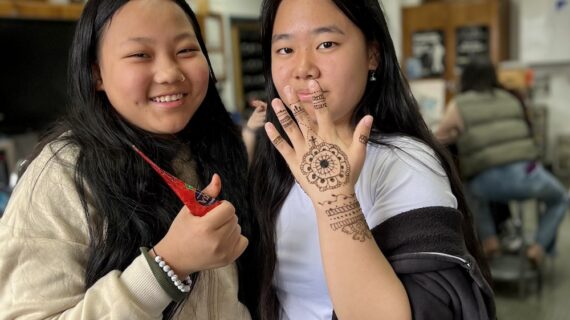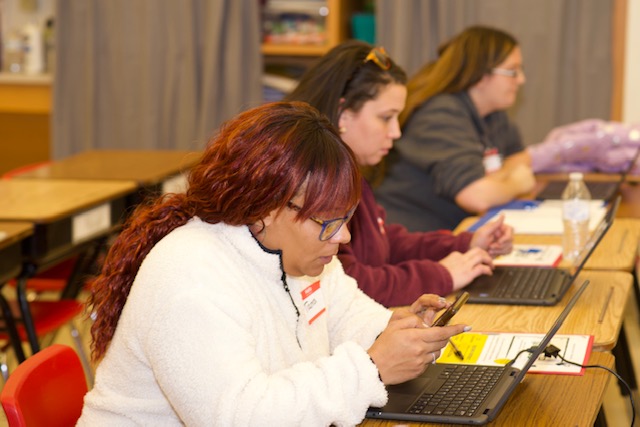
Parents as Allies: Hot dogs and ‘clearance coaches’ are creating new connections at Crawford Central
Photos courtesy of Parents as Allies/Crawford Central.
When the Parents as Allies family-school engagement project began in 2021, the folks at Crawford Central School District knew they wanted to participate. In their district, moms and dads would attend sporting events. And a band of dedicated PTO members would be at school events helping out. But mostly, that was the extent of it.
“We had to move from involvement to engagement,” says district superintendent Thomas Washington, who recently retired. “We had to build trust to build relationships.”
So Washington and Ann Noonen, the district’s director of elementary curriculum and technology, began working with the small group of school staff members and parents who had agreed to join their Parents as Allies (PAA) team.
They conducted “empathy interviews” and soon found lots of encouragement. Parents were clear that they want to be involved and engaged, Washington says. But many “didn’t particularly know how to be involved in their child’s education.”
Often, they didn’t realize how often they could: Often the flyers sent home with students inviting parents to school events never made it into parents’ hands. Teachers assumed parents had no interest, but the parents hadn’t known there was an opportunity to engage.
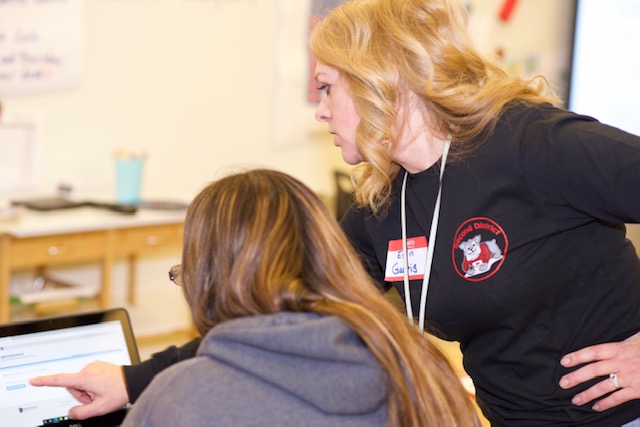
As they began brainstorming about changes they might make, the team also began exploring what it was actually like for parents to volunteer. That’s when they realized exactly where their work should begin: The process of getting official clearance to volunteer within school buildings was incredibly difficult.
It’s important, of course, for schools to have a rigorous process and to follow state laws regarding the access parent volunteers have to students. But the steps involved – including a TB test and fingerprinting, and pages of complicated forms to fill out – were a barrier for so many parents.
How could parents connect and really engage when getting permission to volunteer was so difficult?
So the team began hacking that process.
WHAT DID THEY TRY?
Since working through the maze of steps to get volunteer clearance was difficult to do alone, Crawford Central wanted every parent to have a helper by their side. So they hosted an evening with stations set up at the school:
- teachers were there with laptops, helping walk parents through the various online forms
- the husband of one teacher, trained as a physician’s assistant, set up a table to help with TB tests
- a school staff member, who is also a notary, was on hand to notarize documents
- folks from a local organization were there to help with fingerprinting
This one-stop “Get Connected @ Crawford Central” event was a success: the number of registered volunteers jumped from two to 14. And those folks felt appreciated, because they could see that the district wanted to help them get involved.
Teachers were also grateful. They now have volunteers ready to come along on field trips.
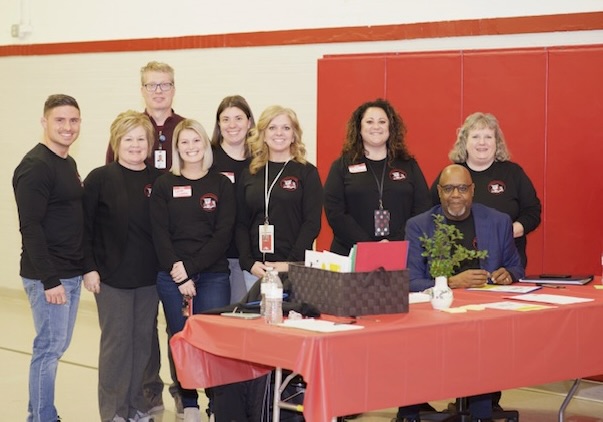
To keep the good going, the district created the position of “clearance coach” – someone who continues to help any parent interested in wading through the clearance process.
With this new crop of volunteers and a growing positive vibe among parents, the PAA team also planned new events with a focus on building community, rather than academics.
During “Pastries With Our New Principal,” the community was invited to the elementary school to meet the new principal and start building a relationship. Rather than a pressure-filled back-to-school night, this was a casual moment to enjoy a donut and a cup of coffee.
And at a “Getting Ready for Kindergarten” event, families could register their children for kindergarten and meet the many staff members who would be interacting with their kids. Everyone from bus drivers and school nurses to cafeteria staff was there to shake hands and get to know these parents and their kids.
Again, the approach was neighborly rather than formal: hot dogs and chips, storytime and STEM activities, and even a chance for parents to learn about pre-K programs for their younger children.
The hot dogs were perhaps the best part: They were grilled by the superintendent and the high school principal on a grill the PAA team bought with grant funding. The grill will now be available for events at the district’s schools and will even be brought out into neighborhoods in the district, where the school staff can bring dinner directly to the families they serve.
WHAT WOULD THEY TELL OTHER SCHOOLS?
- Begin on neutral ground: the team held their first meetings at the public library.
- Actively make it possible for parents to connect: “If you actually give parents an opportunity,” Washington says, “they step up.”
- Be partners: Create a combined team of parents and school staff to tackle the subject of parent-school engagement. Though it’s a habit for schools to control interactions with families, good things happen when you work in true partnership.
